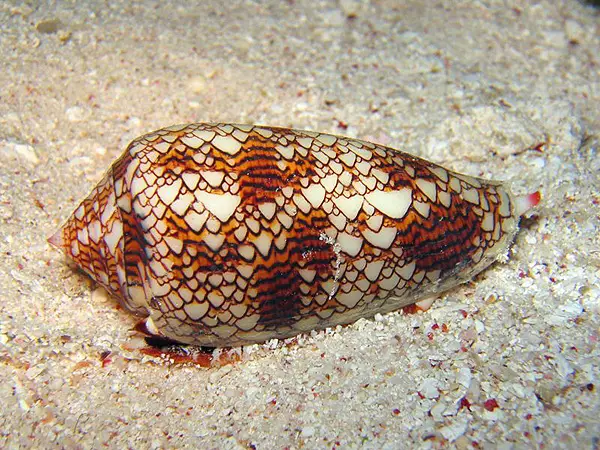CSS Forums
Thursday, May 16, 2024
02:49 PM (GMT +5)
02:49 PM (GMT +5)
|
|||||||
| General Knowledge, Quizzes, IQ Tests A zone where General Knowledge related to this exam can be shared.Surveys and Threads with polls and questions that require answers can be Posted here |
 |
Share Thread:
 Facebook
Facebook
 Twitter
Twitter
 Google+
Google+
|
|
|
LinkBack | Thread Tools | Search this Thread |
|
#1
|
||||
|
||||
|
Many creatures that we are familiar with are venomous or poisonous. Perhaps because they have not produced a large number of human fatalities we are not warned of their dangers. Nevertheless it is wise to know what these creatures are capable of doing. This is a list of the 10 animals you didnít know were venomous or poisonous.
10. Cuttlefish  The cuttlefish is closely related to the squid and octopus. It has 10 arms covered with tiny ****ers and at the base is their beak. This beak injects a fast acting venom which is not harmful to humans. The venom works by attacking the victimís nervous system. 9. Hooded Pitohui  A songbird from New Guinea. Its skin as well as feathers contain a very powerful poison called: homobatrachotoxin. This is the same poison found in the South American dart frogs, although it is severely less toxic then the frogs and a whole bird would have to be eaten for any real harm to occur. The poison is transferred easily to humans by merely touching or handling the bird. 8. Duck-Billed Platypus  The male platypus has a spur located on the heel behind each leg. Their venom is not known to be deadly to humans. The venom is produced only by mature males and is most potent during mating season, leading some researches to believe that it is used primarily against competing males. 7. Gila Monster  The Gila Monster is one of only two known venomous lizards; it can be found in southwest USA and Mexico. The Gila Monsterís venomous bite is different than most animals, in that most of its teeth have grooves that conduct the flow of the poison. Also rather than an injecting bite, the venom flows from these grooves and is injected through chewing. They are rarely fatal to humans. 6. Centipede  The centipede is very common in the US. Its body is made up of up to 150 segments with a pair of legs for each segment. The head has long antennae and a pair of large claw like structures. These claws carry the venom glands. While centipedes are for the most part not fatal to humans, some of the large or giant species can be very dangerous to children. 5. Millipede  Closely related the centipede, some millipedes emit poisonous liquid secretions or hydrogen cyanide gas through microscopic pores on their body. Some of these substances are caustic and can burn the exoskeleton of ants and other insect predators, and the skin and eyes of larger predators. 4. Cone Snail  The cone snailís harpoon is a modification of the radula, an organ in molluscs which acts as both tongue and teeth. The harpoon is hollow and barbed, and is attached to the tip of the radula inside the snailís throat. When the snail detects a prey animal nearby, it turns its mouth - a long flexible tube called a proboscis - towards the prey. The harpoon is loaded with venom and, still attached to the radula, is fired from the proboscis into the prey by a powerful muscular contraction. The venom paralyzes small fish almost instantly. The snail then retracts the radula, drawing the subdued prey into the mouth. The cone snailís bite is similar to a bee sting, but the larger species are responsible for 30 known cases of human death. 3. Slow Loris  The Slow Loris is one of the few mammals which is venomous. In addition, it is the only mammal which is both venomous and poisonous at the same time. Slow lorises produce a toxin on the inside of its elbows which it smears on its young to prevent them from being eaten. In addition it will **** these patches to put the poison in its mouth, giving it a venomous bite used for self defense. 2. Komodo Dragon  While they do not technically produce venom, their diet consists of pretty much anything dead and that creates a special mixture of deadly bacteria build up in their mouths. Their saliva contains more than 50 types of bacteria and 7 are highly septic and 4 have no known specific antidote. However, if treated with powerful antibiotics, it proves non-fatal to humans. 1. Coral  There are many types of coral and a few of these have toxic chemicals that are not fully researched yet. The most deadly coral is the Palythoa. It can kill a rabbit with only a 25 nanogram injection. To kill a human would only take 4 micrograms. Palytoxin is considered one of the most toxic organic poisons. Symptoms of palythoa poisoning include chest-pains, difficulty breathing, racing pulse and low-blood pressure. Death occurs within minutes, and there is no treatment. |
 |
«
Previous Thread
|
Next Thread
»
|
|
 Similar Threads
Similar Threads
|
||||
| Thread | Thread Starter | Forum | Replies | Last Post |
| EDS- notes | Predator | General Science Notes | 70 | Sunday, February 28, 2016 12:05 PM |
| Solved Everyday Science Papers | Dilrauf | General Science & Ability | 4 | Friday, April 08, 2011 06:10 PM |
| Geography Two - FARMING | Bhalla Changa | Geography | 11 | Wednesday, November 28, 2007 09:53 AM |
| Cloning | samreen | General Science & Ability | 3 | Friday, December 22, 2006 03:38 PM |
| Animal Kingdom | Eram Khan | General Science Notes | 0 | Friday, February 24, 2006 05:32 AM |






